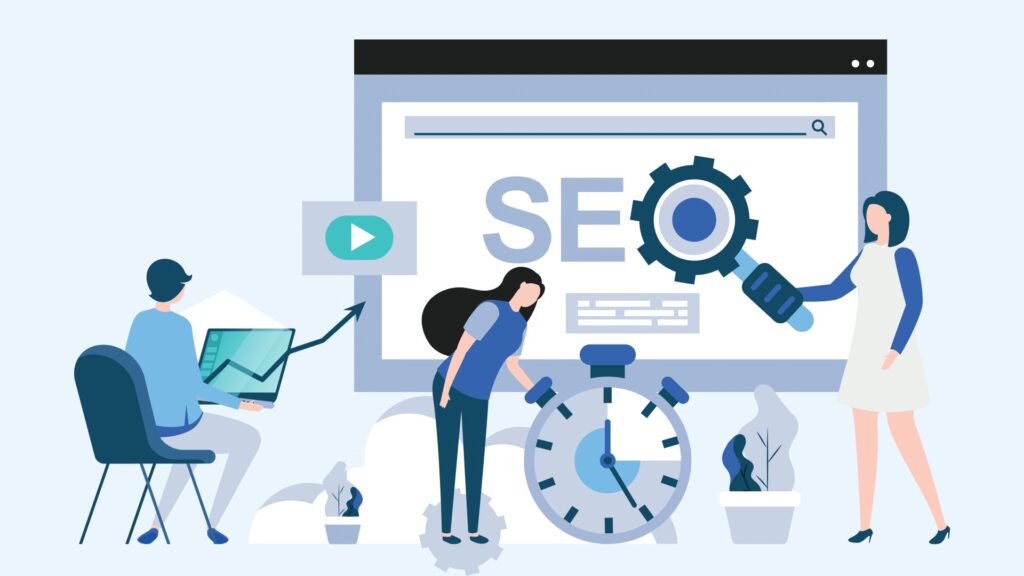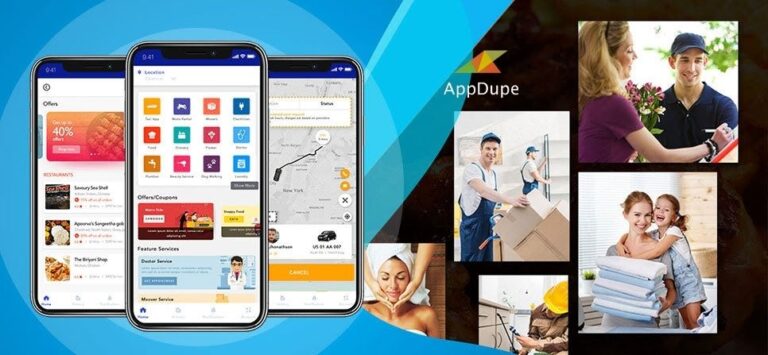46 percent of all Google searches are for local information, which means that if your business isn’t optimized for local search, you could be missing out on people who are ready to shop in your region. To summarise, if you want your business to remain relevant, local SEO is a must-have.
We’ve put together a complete guide on how to optimize your business for local SEO, which includes ideas and resources.
In this guide, you will learn how to use local search to contact potential customers who are looking for items and services in your local area.
What is Local SEO (search engine optimization)?
For brick-and-mortar businesses, local SEO (Search Engine Optimization) is a way to boost their online presence.
A company’s organic traffic from searches conducted by nearby clients can be improved by adopting local SEO best practices.
As a way to acquire relevant data for local search results, search engines use signals such as material from social media profiles, links, and citations.
In order to get their products and services in front of local customers who are looking for them, businesses can employ local SEO to help with their positioning.
Local SEO Technique For Beginners

Get backlinks that are of high quality and authority.
There are numerous ways to increase your local SEO with inbound links, including boosting your domain authority and proving to Google that you’re a reputable business.
Initiate the process by building a personal network that includes the local chamber of commerce and other business organizations such as business development districts and licensing bureaus.
Involve yourself in the local community by holding a community event, sponsoring webinars and meet-ups, and interacting with influential people. Be confident in approaching potential partners and asking if they would be interested in including you in their partner directory.
Having a guest post on your blog might also help you get more backlinks. Talk to and about other people in your business (in a positive way, of course!) and serve as a resource for the community.
Inbound connections, social media development, and media coverage are all a result of active participation in community conversations.
Make sure your website is compatible with mobile devices.
Using both local and mobile searches is a great way to improve your online presence (61 percent of all Google searches are performed on mobile).
Searching for reviews, getting driving directions, and getting a hold of customer service are all popular uses of your site on a mobile device. Near me, searches on mobile have surged by a whopping 250% in the last year alone (Think With Google).
Make your site mobile-friendly for your potential and current clients.
Initiate the production of in-person content.
Since Google keeps getting smarter, content authors may now actually write for users, rather than search algorithms. To draw in a certain audience, you may want to focus on local or industry news rather than broaden your audience by writing about a broader range of topics.
Promote local industry events, news, personnel, and other learning materials on your blog to establish yourself as the local authority in your field. Content that goes beyond what your company sells is a great way to attract new customers.
Creating a useful resource to help prospective businesses get acquainted with your city is an excellent way to market your local security company. It’s possible to give value to your persona by including on-page local signals like maps of local businesses or events calendars.
Your website should have a section for locations.
To better serve your customers, if you have more than one physical location, you should develop separate location pages. Your name, location, contact information, store hours, unique business descriptions, parking/transit information, specials, and customer testimonials can all be found on the location pages you create for your store’s website.
If you have many location pages, it’s critical that you avoid repeating material on each of them. Create a localized About Us page for single-location enterprises. If you add a Google Map to your website’s location page, you’ll gain a lot of extra points (s).
Use keywords and phrases that are relevant to your target audience.
When it comes to content, each new blog post is a new indexed page for your webpage, a new page where you can target a geographic search phrase, and a new chance to be found in the search engine results pages (SERPs).
Optimizing content for search engines is an essential part of the writing process. The URL, title, header, and meta description should all include high-volume keywords.
The best way to come up with geo-targeted content is to showcase client success stories and case studies.
Improve the structure of your internal links.
Adjusting your site’s internal linking structure can help your SEO rankings just as much as getting links from outside your site (which I’ll cover in more detail later).
What is the significance of internal linking? The following is what it does:
- Supports the navigation of a webpage.
- assists in the design and organization of the site’s content and structure.
- Distributes the authority and ranking power of pages amongst themselves
Perform an SEO audit for your local area.
Once you’ve mastered the fundamentals, it’s easy to let up on the gas pedal. SEO, on the other hand, is a dynamic and ever-evolving process. After a thorough audit of your website, you’ll know where you stand and what needs to be done to reach your goals, rather than merely tweaking things and seeing what sticks. The following are possible components of a local SEO audit:
Google My Business Audit – How does your Google My Business show up in the search results for your location? Is the data correct?
Search Console Audit – Google Is your website readable? Is it free of errors that would prevent it from being indexed?
Does your site include all of the on-page SEO features that are necessary for a high search engine ranking?
Are all of your citations in the most reputable business directories correct?
How does your website stack up against your competitors’? Do you need to fill in any blanks? In terms of inbound links, content, appearance, and layout, how do you stack up?
Your website’s performance can be evaluated by conducting a website audit!
Optimize your web directories and citations.
In the US, Apple, Yelp, Bing, Google, Trip Advisor, and others rely on data from these four map data aggregators for a significant portion of their map data
Always make sure to check your citations across all data aggregators to ensure that they are consistent and comprehensive before submitting them.
Inconsistencies such as incorrect phone numbers, incorrect suite numbers, or misspelled abbreviations might cause confusion.
This means that your business may not show up in search results at all if Google can’t identify which data about your organization is correct.
In addition, you should eliminate any listings that appear to be duplicated.
Consistency is key when it comes to your online persona.
You must make it as simple as possible for others to locate you, including search engines. Set up your NAP (name, address, and phone number) to get started (with area code).
On your website, you should include this as crawlable HTML text.
Keep in mind that, unlike text in an HTML document, photos cannot be scanned by search engines. Site footers and headers are typically the most common locations for the NAP.
Involve yourself in social media and publish content to Google My Business.
Google places a greater emphasis on information that is shared on social media than ever before.
Sharing your Google My Business page on social networks is a great way to further connect social and search.
Optimize your Google My Business page for search engine results.

Using Google My Business is the best way to ensure that your business’s content is authenticated and supported by Google, which is why it has become the most popular local search tool.
You should do the following to make sure your Google My Business listing is optimized:
- A Google My Business page needs to be set up and verified.
- Google Posts can be accessed from within your Google account.
- Make it easy for your clients to leave feedback on your business’s website.
- Authentically respond to reviews, mentioning your location. As an example, “We much value your input on [product/service] in [city, state]. We appreciate your thoughts and ideas and hope to work with you again in the future. “On behalf of the entire [business name] team, thank you.”
- Search engine giant Google may award your business with a prominent sidebar listing in local search results, assuming you can prove your legitimacy to the search giant.
This isn’t simply for SEO purposes, either. To make it easier for potential clients to find your business, it’s important to have accurate contact information and opening hours on your website.
Consumer buying habits and corporate operations will be drastically altered in 2022, making it more necessary than ever for businesses and customers to stay on top of the latest information.
For local businesses, local SEO is an essential aspect of their overall SEO strategy. For businesses that have a physical location, local SEO can help customers locate them when they search online.







